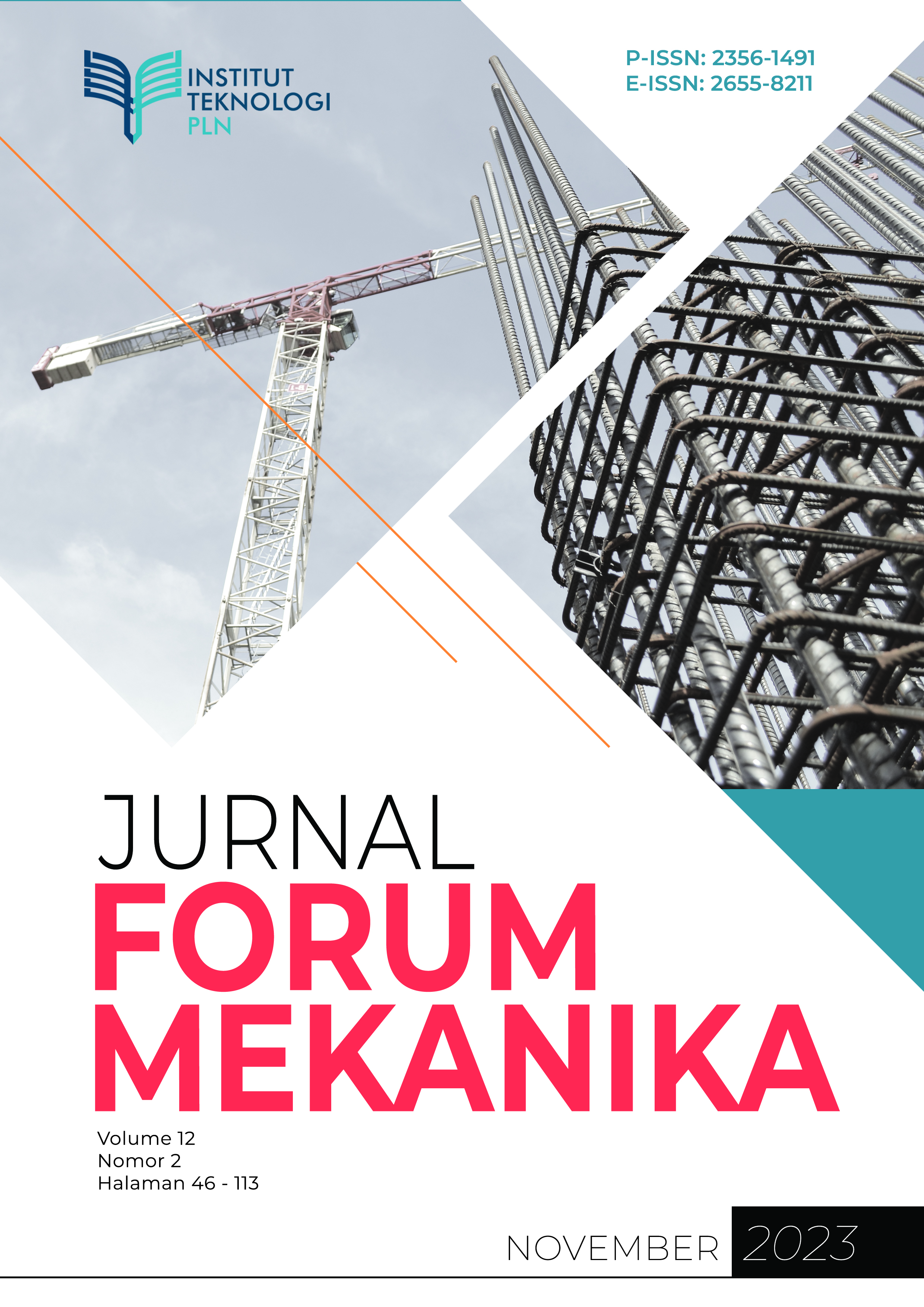Korelasi Uji Nondestruktif UPV terhadap Kekuatan Mekanis Beton beragregat Plastik Polypropylene
Main Article Content
Abstract
Concrete is the most popular conventional building material. Destructive testing is a classic way to determine the quality of concrete. Non-destructive testing (NDT) methods are starting to be developed because they are more practical and do not damage concrete. On the other hand, the accumulation of plastic waste has become a global problem. Plastic waste has become a pollutant that causes many new problems, especially in the balance of the environmental ecosystem. This research aims to analyze the mechanical and physical characteristics of concrete that uses plastic aggregate partially using the non-destructive testing method (UPV test). The percentage of PP granules ranges between 0%, 10%, 20%, 30% where the FAS used is 0.45. Each concrete sample will be cast in a cylindrical mold measuring 10x20cm, block mold 10x10x40cm. The results obtained show that an increase in the percentage of 10% PP in the sample causes a decrease in the slump value. The percentage reduction for each 10% increase in plastic granules ranges from 0.8% to 12.2%. Then the use of PP plastic as fine aggregate can reduce the strength of concrete by up to 29%. The higher the UPV value, the compressive strength of the concrete increases. So prediction of compressive strength values ??based on UPV numbers can be done with the equation Y=0.0812x-302.99
Downloads
Article Details
References
H. Thomas, A. Ede. (2019). Use of non-destructive tests for reinforced concrete damage assessment, in: IOP Conf. Series: Materials Science and Engineering, 640, 012037.
M. Abdul Rahim, S. Shahidan, L.C. Onn, N.A.A. Saiful Bahari, N. Abd Rahman, A. Ayob.(2020). The behavior of non-destructive test for different grade of concrete. Int. J. Integr. Eng., 12 (9), pp. 1-8
N. Saikia, J. De Brito. (2012). Use of plastic waste as aggregate in cement mortar and concrete preparation: a review, Constr. Build. Mater. 34 385–401, doi: 10.1016/j.conbuildmat.2012.02.066 .
N. Saikia , J. De Brito.(2014). Mechanical properties and abrasion behaviour of concrete containing shredded PET bottle waste as a partial substitution of natural aggregate, Constr. Build. Mater. 52. 236–244 .
M.A. Kamaruddin, M.M.A. Abdullah, M.H. Zawawi, M.R.R.A. Zainol,(2017). Potential use of plastic waste as construction materials: Recent progress and future prospect, IOP Conf. Ser. Mater. Sci. Eng. 267. 012011, https://doi.org/10.1088/1757-899X/267/1/012011.
L. Gu, T. Ozbakkaloglu, (2016). Use of recycled plastics in concrete: a critical review, Waste Manag. 51. 19–42, https://doi.org/10.1016/j. wasman.2016.03.005
I. Almeshal, B.A. Tayeh, R. Alyousef, H. Alabduljabbar, A. Mustafa Mohamed, A. Alaskar. (2020). Use of recycled plastic as fine aggregate in cementitious composites: A review, Constr. Build. Mater. 253. 119146, https://doi.org/10.1016/ j.conbuildmat.2020.119146.
A.J. Babafemi, B. Šavija, S.C. Paul, V. Anggraini. (2018). Engineering properties of concrete with waste recycled plastic : A review. https://doi.org/10.3390/su10113875.
I. Mercante, C. Alejandrino, J.P. Ojeda, J. Chini, C. Maroto, N. Fajardo, Mortar and concrete composites with recycled plastic: a review, Sci. Technol. Mater. 30 (2018) 69–79, https://doi.org/10.1016/j.stmat.2018.11.003
Lencis, U., Udris, A., & Korjakins, A. (2021). Case Studies in Construction Materials Frost influence on the ultrasonic pulse velocity in concrete at early phases of hydration process. Case Studies in Construction Materials, 15 (March), e00614. https://doi.org/10.1016/j.cscm.2021.e00614.
Mohammed, A. A., Rafiq, S. K., & Hamid, N. A. (2021). Case Studies in Construction Materials The assessment of concrete subjected to preloading using non destructive testing methods. Case Studies in Construction Materials, 15(September), e00705. https://doi.org/10.1016/j.cscm.2021.e00705
Mohammed, T. U., & Rahman, N. (2016). Effect of types of aggregate and sand-to-aggregate volume ratio on UPV in concrete. Construction and Building Materials, 125, 832–841. https://doi.org/10.1016/j.conbuildmat.2016.08.102
Badan Standarisasi Nasional, (2011). SNI 1974-2011 Cara Uji Kuat Tekan Beton dengan Benda Uji Silinder yang Dicetak, Jakarta, Indonesia.
ASTM C78-02, (2017). Standard Test Method for Flexural Strength of Concrete (Using Simple Beam with Third-Point Loading). ASTM Standards.
ASTM C597-02, (2012). Standard Test Method for Pulse Velocity Through Concrete. ASTM Standards.

